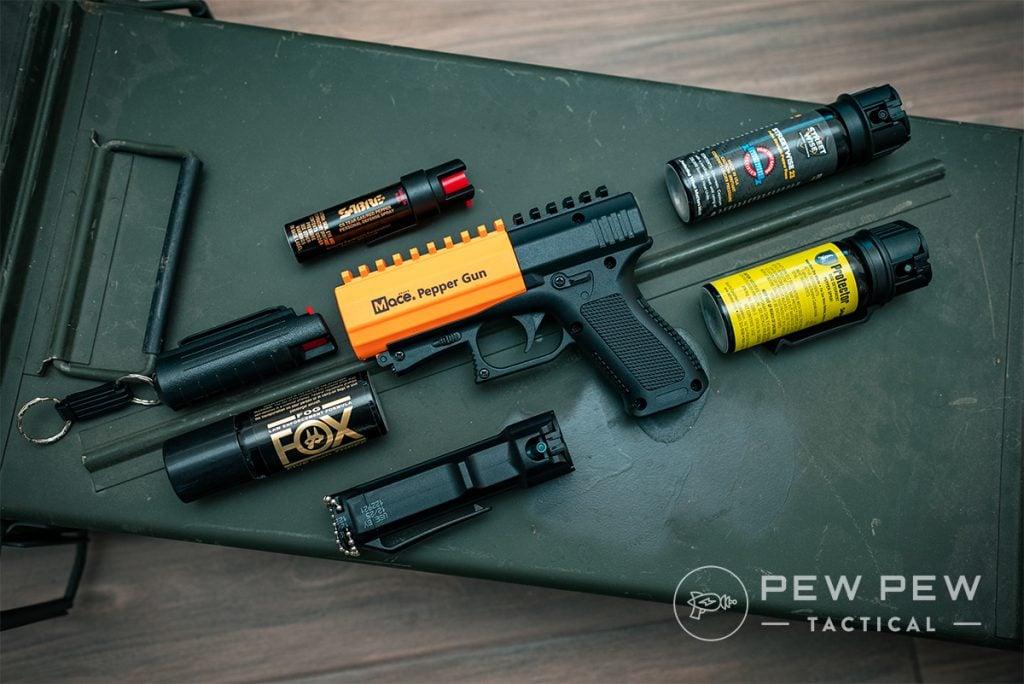Table of Contents
- Updated Training Requirements Emphasize Practical Application and Safety
- Incorporation of Advanced Chemical Formulation Guidelines
- Mandatory Certification Programs Aim to Enhance Instructor Quality
- Recommendations for Compliance and Best Practices in Training Facilities
- In Retrospect
Updated Training Requirements Emphasize Practical Application and Safety
The newly enacted rules mandate that all self-defense spray training programs incorporate hands-on practical exercises designed to enhance user confidence and effectiveness in real-world scenarios. Trainees will engage in simulated defense situations, learning to deploy sprays accurately and swiftly under pressure, which represents a significant shift from previous theory-driven approaches. This experiential focus ensures participants not only understand how to handle the device but also how to do so safely and appropriately, minimizing accidental misuse or injury.
Additionally, safety protocols have been rigorously expanded to cover proper storage, maintenance, and legal usage boundaries. Certified instructors must now emphasize the importance of responsible handling and legal compliance throughout all training sessions. Key components include:
- Recognizing and respecting state-specific restrictions
- Practice drills that simulate unexpected deployment
- Comprehensive emergency response procedures
These enhancements reflect a broader commitment to public safety and user preparedness, establishing a new benchmark for self-defense education moving into 2025.
Incorporation of Advanced Chemical Formulation Guidelines
New regulations mandate that self-defense sprays adhere to rigorous chemical formulation standards designed to maximize both efficacy and user safety. These guidelines introduce stringent controls on ingredient proportions, ensuring that sprays deliver potent deterrent effects without causing undue harm or lasting injury. Manufacturers are now required to incorporate substances that neutralize quickly once deployed, minimizing environmental impact and reducing risks of contamination.
Key aspects of the updated formulation standards include:
- Enhanced dispersion: Optimizing particle size for even coverage and improved reliability in various weather conditions.
- Non-flammable agents: Strict prohibition on combustible components to prevent fire hazards during deployment.
- Skin-safe irritants: Employing compounds that incapacitate without long-term dermal effects, complying with new safety benchmarks.
Mandatory Certification Programs Aim to Enhance Instructor Quality
Beginning in 2025, all instructors offering self-defense spray training will be required to complete rigorous certification programs approved by state regulatory bodies. These programs focus on enhancing the instructional quality by integrating comprehensive knowledge on legal frameworks, safety protocols, and effective communication techniques. Instructors will undergo both theoretical and practical evaluations to ensure they possess the expertise necessary to deliver responsible and impactful training sessions. This standardization aims to eliminate inconsistencies in course delivery and guarantee that learners receive accurate, up-to-date information.
The newly mandated programs emphasize several core competencies, including:
- Understanding of state and federal regulations governing the possession and use of defense sprays.
- Best practices for de-escalation and safe deployment of sprays in realistic scenarios.
- First aid measures and post-exposure protocols to mitigate injury risks.
- Effective pedagogical strategies tailored to diverse learner groups.
Recommendations for Compliance and Best Practices in Training Facilities
Training facilities must prioritize adherence to the updated 2025 state regulations by implementing comprehensive safety protocols and ensuring all instructors undergo certified education programs. Key compliance measures include:
- Regularly updating training materials to reflect state-approved techniques and legal requirements
- Maintaining detailed records of participant certifications and session outcomes
- Deploying appropriate safety gear and emergency response plans during practical exercises
Beyond regulatory adherence, best practices demand that trainers foster a responsible learning environment where ethical use of self-defense sprays is emphasized. Facilities should conduct periodic evaluations of their programs, integrating feedback to enhance effectiveness and safety standards. Promoting community awareness about legal implications and practical scenarios of self-defense sprays not only ensures compliance but also builds public trust in training institutions.
In Retrospect
As the new state regulations for self-defense spray training take effect in 2025, individuals and training providers alike will need to adapt to these heightened standards. The updated rules aim to enhance public safety by ensuring that users are better informed and prepared when utilizing these defensive tools. Staying informed about the latest requirements will be crucial for compliance and effective personal protection in the coming years.Check Our Other Blogs
- StunGun – Your Trusted Source for Stun Guns, Laws, and Self-Defense Tips
- PepperSprayLaws – Your Trusted Resource for Pepper Spray Information
- StunGunLaws – Your Trusted Guide to Stun Gun Legality and Safety




